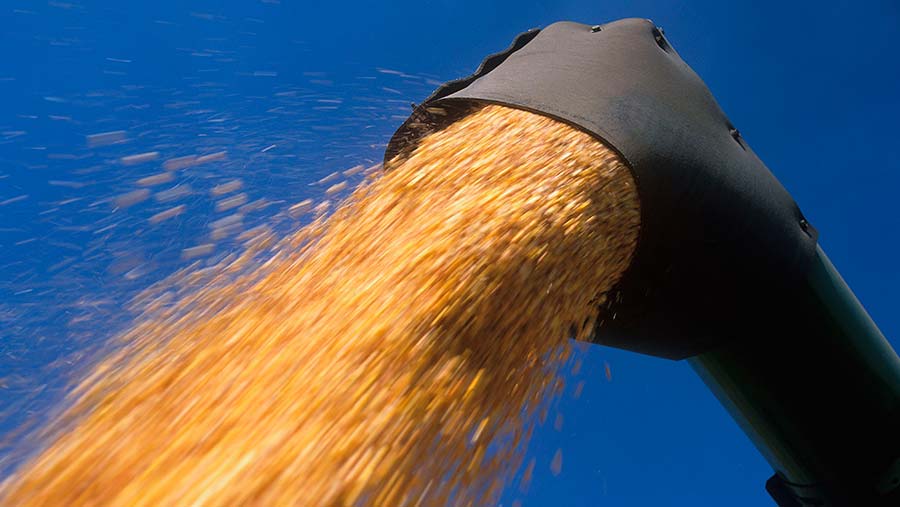Can the grain price rises of recent weeks continue?
 © Design Pics Inc/REX/Shutterstock
© Design Pics Inc/REX/Shutterstock A large-scale weather scare in a major producer can often trigger an upturn in grain prices on the back of a tangible risk to grain supplies. At other times it can be a collection of “what-ifs?”
While recent weather events in some parts of the world have been significant enough to fall into the first category, the majority are far from done deals, with plenty of time for conditions and growth to catch up.
The combination has been enough to unsettle markets, however, with grain prices rising accordingly despite the ongoing strong stocks and supply situation.
See also: Business Clinic: How can I recruit good farm staff?
Although the US experienced a slow start to corn and spring wheat plantings due to heavy snow, followed by rain, the situation has now improved and it is generally the hot and dry conditions in some regions that are causing concerns.
Indeed, dry conditions causing historically poor crop ratings in US hard red winter (HRW) wheat in the southern plains has been one of the main market drivers recently.

Stuart Shiells is UK trading director at Cofco International
During the recent Kansas Wheat Quality Crop Tour, yield estimates were put at just 37 bushels/acre (bpa) against last season’s final yield of 48bpa – a drop of 23%.
With most of the HRW crop now reaching critical growth stages, better weather could still have a big effect on final yields.
In fact, following the mid-May USDA report, a lack of fresh bullish data, combined with more favourable weather forecasts for key regions, has been enough to take markets sharply lower.
Too late to reverse yield losses in Brazil
Another area exerting a strong influence on prices recently has been the Safrinha corn crop in Brazil, where dryness has caused some analysts to cut total corn production estimates to as low as 82m tonnes from the USDA’s earlier 92m tonnes.
Although rain would help stabilise the crop, it’s now probably too late to reverse yield losses.
At the same time, the market is keeping a close eye on Australia, where a similar lack of rainfall could affect planting prospects.
Russian rain limits Black Sea losses
Some areas of the Black Sea region have also experienced dryness, but recent showers have stopped this becoming a real issue. With Russia being the world’s cheapest source of wheat, it will continue to be a big market driver in the coming season.
Although some damage to 2018’s global production potential has been done, the general feeling is that the effects of this are already priced into the market.
If all the worries in different countries deliver their full consequences, prices could have further to rise, but the reality of this happening is historically remote.
At the same time, there are signs that prices are already starting to slip as the current stories play out and lose their hold.
The bottom line is while there is hope that prices can move a little higher, it will take something new and significant like a major weather event in the Black Sea region to really drive the market further.
Effect on the UK
The price rally has been a welcome diversion against a backdrop of a wet, cold spring and late planting woes.
While the poor start to the year has triggered concerns over spring-sown crops, the recent warm weather has done much to help growers catch up. Winter wheat crops are generally looking strong.
Across the EU, crops look good too and with a good chance Russia’s production might not be the record breaker it was last year, export opportunities to take up the slack could be forthcoming.
Unfortunately, the UK is unlikely to benefit much from this, with current production estimates putting 2018 in the same range as last year, resulting in a very small exportable surplus.
A summary of the current main price factors and their probable influence
 Red: Factors putting downward pressure on prices – accounts for 20% of current market influence
Red: Factors putting downward pressure on prices – accounts for 20% of current market influence
Canadian wheat area forecast at 10.2m hectares compared with 9.06m hectares last season, plus a record wheat crop of 20m tonnes could be produced in Argentina. Brazil could produce 117m tonnes of soya beans, helping to offset any shortfall in the Argentinian crop.
Amber: Watch this space – 50%
A lot of weather stories need to play out across the world. While any one of these is unlikely to unsettle the bigger picture, a few adverse results together could. Australia’s problems with high temperatures are the latest to come under the spotlight.
Green: Factors exerting upward pressure on prices – 30%
Drought problems in the US southern HRW wheat belt, a slow start to US corn and spring wheat planting and less-than-perfect conditions in South America will continue to underpin the market until conditions improve.
Cofco International UK is the new name for Nidera UK.
